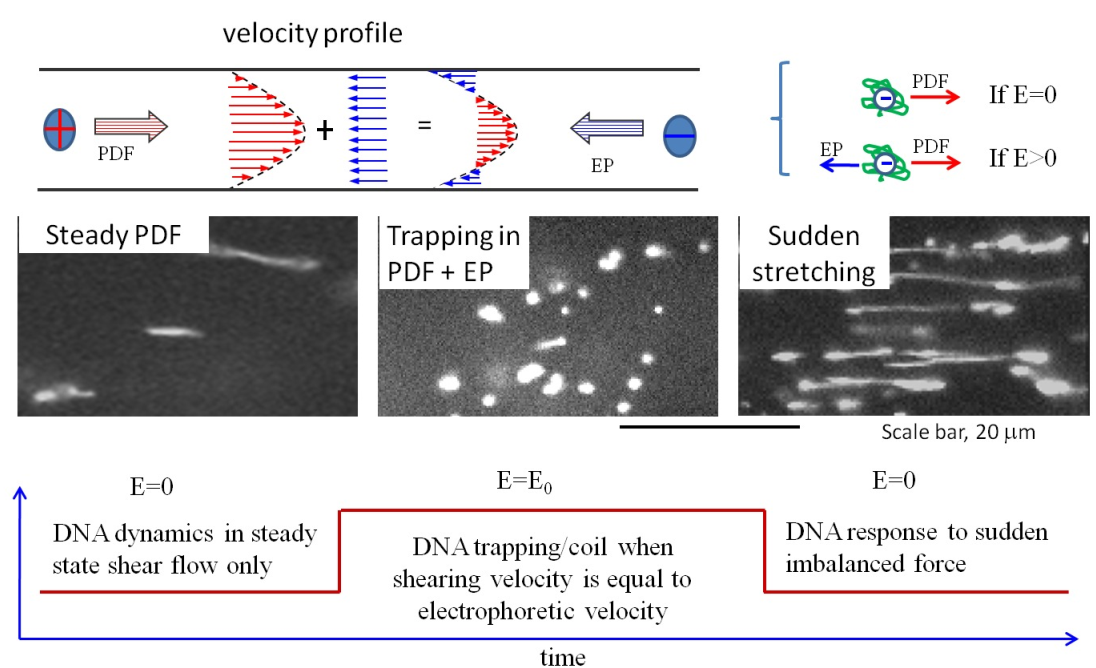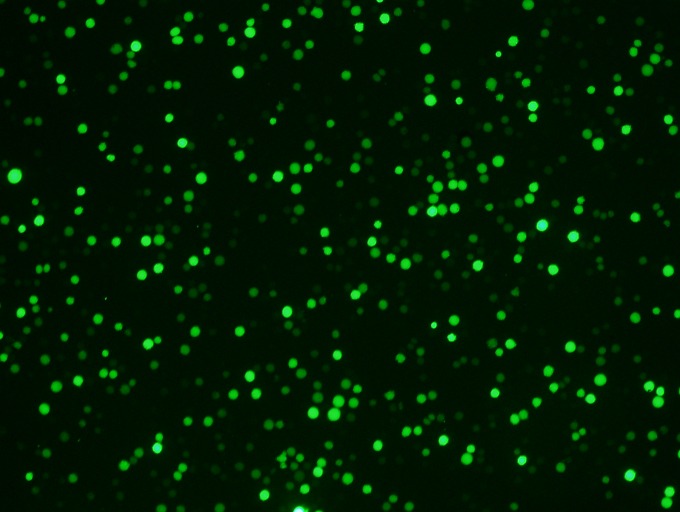Polymer Nanoengineering

|
Polymer nanostructures/devices are often favorable in life science applications. However, their “soft” nature often results in structure damage or defects during processing or applications, particularly if desired nanostructures have high-aspect-ratios and/or high feature density. To solve such processing challenges in polymer nanoengineering, we developed a Sacrificial Template Imprinting (STI) approach to avoids structural damage or defects generation and a Flow Assisted Dynamic Assembly (FADA) to reinforce nanostructures and tailor their surface properties
.
|
(1)K K, Rajagopalan, et al, Nano LIFE, 2013, 3, 1350001-9
(2)S. Wang, et al, ChemPhysChem, 2008, 9, 967-973. |
| |
|
Hybrid Field Microfluidics (HFM)

|
In HFM, an external field such as electrokinetics is imposed to balance the flow stress at desired locations and appropriate moments. HFM is used to regulate the conformations and their dynamics of macromolecules, hydrodynamic interactions, and colloid assembly process . |
(1)F. Ren, et al, Biomicrofluidics, 2012, 6, 044103/1-10.
(2)W. Liao, et al, Electrophoresis. 2010, 31, 2813;
(3)X. Hu et al, Phys Rev E, 2009, 79, 041911;
(4)S.Wang, et al, Lab. Chip, 2008, 8, 573. |
| |
|
Nanomedicine

|
We tackle the cell level delivery challenges for nonviral approaches with the introduction of novel nanostructures and nanodevices. Specifically, we apply an Electroporation Nanodevice to accomplish cell-specific transfection at single cell level and a new Dynamic Complexation platform to produce high-quality nanoparticles for the delivery of DNA and RNA . |
(1)S. Wang, et al, Biomicrofluidics, 2013, 7, 011301/1-14.
(2)S Wang et al, Biosen. Bioelectron 2010, 26, 778;
(3) Z. Fei et al, Anal. Chem . 2010, 82, 353;
(4) S Wang et al, Anal. Chem. 2009, 81, 4414; |
| |
| |
|
Funding Source |
   |
| |
|
| |
|
| |
|
| |
|
| |
|